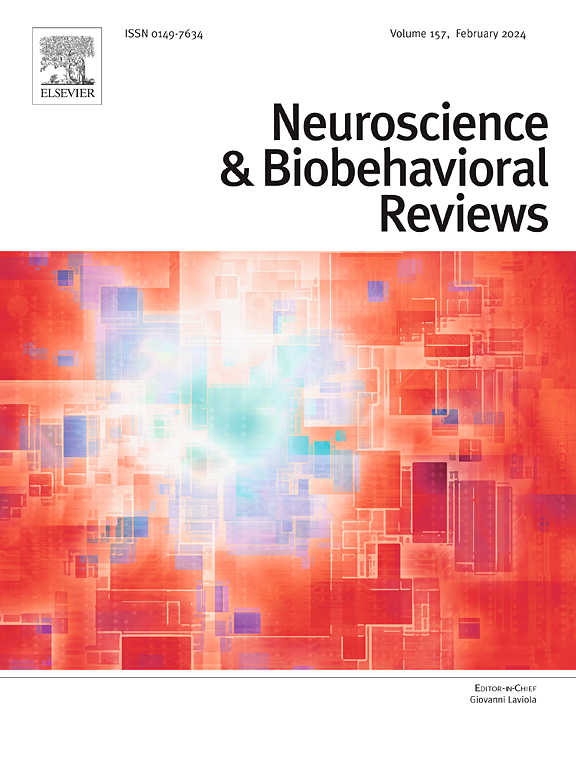PTCHD1蛋白:脑功能和神经发育障碍的重要因素。
IF 7.9
1区 医学
Q1 BEHAVIORAL SCIENCES
引用次数: 0
摘要
神经发育障碍(ndd)涵盖了广泛的疾病,包括智力残疾(ID)、注意缺陷多动障碍(ADHD)和自闭症谱系障碍(ASD),通常与突触功能中断有关。在主要的NDD基因中,PTCHD1 (Patched Domain Containing 1)编码一种跨膜蛋白,该蛋白在突触功能中起关键调节作用。PTCHD1的突变和微缺失与整体发育迟缓(如ID、ASD和行为异常)有关。本文探讨了PTCHD1的神经发育功能,特别是其在突触环境中的位置,从与突触后蛋白质组的关联到几种主要神经元信号通路的调节,胆固醇稳态和受体运输。在病理生理学背景下,对Ptchd1敲除小鼠模型的研究揭示了异常的行为表型,与突触损伤有关,包括兴奋性突触后电流减少和树突形态改变,这与最近在人类来源的神经元模型上的结果相似。通过综合遗传学、分子学和行为学的研究结果,本综述强调了PTCHD1在神经发育和突触调节中的多方面作用。了解其在突触通路中的功能可能为ndd的病理生理学提供重要见解,强调需要进一步研究以阐明其作为潜在的突触孤儿受体的作用。本文章由计算机程序翻译,如有差异,请以英文原文为准。
The PTCHD1 protein: A prominent actor in brain function and in neurodevelopmental disorders
Neurodevelopmental disorders (NDDs) encompass a broad spectrum of conditions, including intellectual disability (ID), Attention Deficit Hyperactivity Disorders (ADHD) and autism spectrum disorders (ASD), often linked to disrupted synaptic functionality. Among the major NDD genes, PTCHD1 (Patched Domain Containing 1) encodes a transmembrane protein which acts as a crucial regulator of synaptic function. Mutations and microdeletions in PTCHD1 have been associated with global developmental delays such as ID, ASD, and behavioral abnormalities. This review explores the neurodevelopmental functions of PTCHD1, particularly its position within the synaptic environment, from the association with the postsynaptic proteome to the regulation of several major neuronal signaling pathways, cholesterol homeostasis and receptor trafficking. In a pathophysiological context, studies in Ptchd1 knockout mouse models revealed abnormal behavioral phenotypes, linked to synaptic impairments, including reduced excitatory postsynaptic currents and altered dendritic morphology similarly to recent results on human-derived neuronal models. By synthesizing findings from genetic, molecular, and behavioral studies, this review underscores the multifaceted roles of PTCHD1 in neurodevelopment and synaptic regulation. Understanding its function in synaptic pathways may provide crucial insights into the pathophysiology of NDDs, emphasizing the need for further research to clarify its role as a potential synaptic, orphan receptor.
求助全文
通过发布文献求助,成功后即可免费获取论文全文。
去求助
来源期刊
CiteScore
14.20
自引率
3.70%
发文量
466
审稿时长
6 months
期刊介绍:
The official journal of the International Behavioral Neuroscience Society publishes original and significant review articles that explore the intersection between neuroscience and the study of psychological processes and behavior. The journal also welcomes articles that primarily focus on psychological processes and behavior, as long as they have relevance to one or more areas of neuroscience.

 求助内容:
求助内容: 应助结果提醒方式:
应助结果提醒方式:


